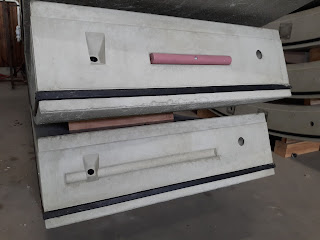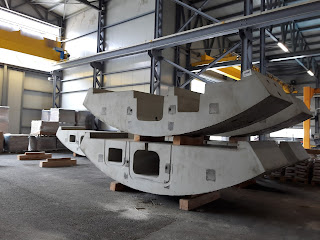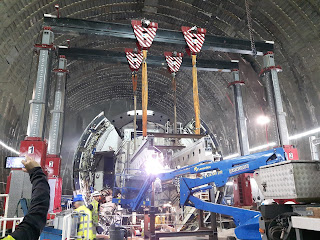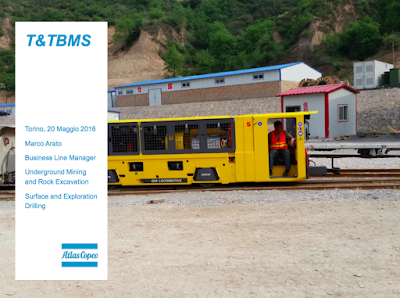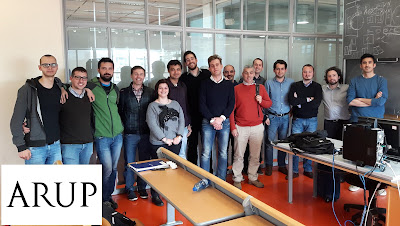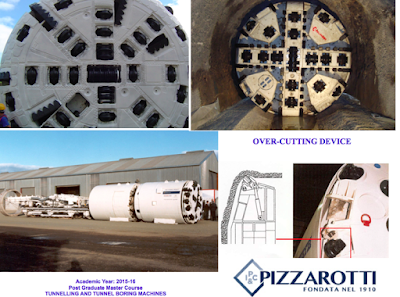During this week we had the opportunity to gather some of the most interesting case studies of the carrier of Brian Fulcher (Ex Kenny Construction Company, USA). He introduced cases such as metro line extension in 72nd street NY and Rio Piedras in Puerto Rico, explaining the keys of the successes and defeats he faced during this challenging projects.
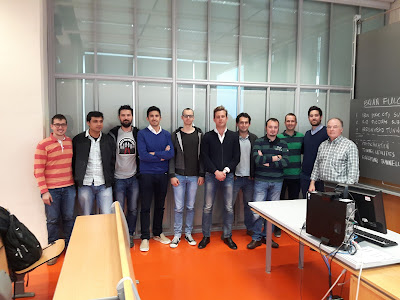 |
| Brian Fulcher and the students after his lecture. |
Going on this week, Berenice Moreau (CETU, France) held an outstanding lecture on segmental lining design for fire resistance. Starting from the analysis of the catastrophic fire events that took place in the late nineties all around europe, she went through the evolution of the laws and norms concerning the lining design to introduce the theories proposed and in use nowadays in order to bring safety inside the tunnel not only in terms of stability but mainly for the people passing through.
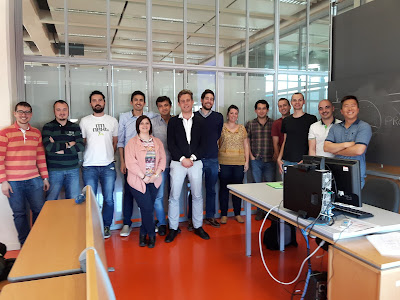 |
Berenice Moreau and the students after her lecture.
|
Daniele Martinelli (Politecnico di Torino) presented a great lecture on abrasivity tests to be carried out in the laboratory for the assessment of the wear phenomenon of the tools during the excavation process. Even if there are some standard tests very well known and correlated to the cutting tools life, there is also a great research on going to find tests that are more and more representative of the true conditions to be found on site.
Some representers of Pini swiss engineers came to present the project of Ceneri Base Tunnel they worked on as designers in the last years. Davide Merlini as the chief manager of the project, presented its main aspects and peculiarities. Stefano Morandi talked about the geological features as the Site Supervisor in Sigerino adit. Mateo Falanesca presented the approach adopted for the design of rock excavation and finally Francesco Rossi explained the case of a portal through filling material below a highway under operation, a masterpiece of engineering.
 |
| Pini Engineers and the students after the lecture. |
Finally, Giovanni Giacomin (Ghella Mechanised Excavation Manager) presented two great case histories. Starting from Maldonado sewage system in Argentina, a two tube system to cope with the constant floods of Buenos Aires city with a pumping station to the sea. Then he presented a fantastic project developed in Australia for the Brisbane Legacy Way, an outstanding performance in terms of quality security and logistics.
 |
| Giovanni Giacomin, his son and the students after his lecture. |






